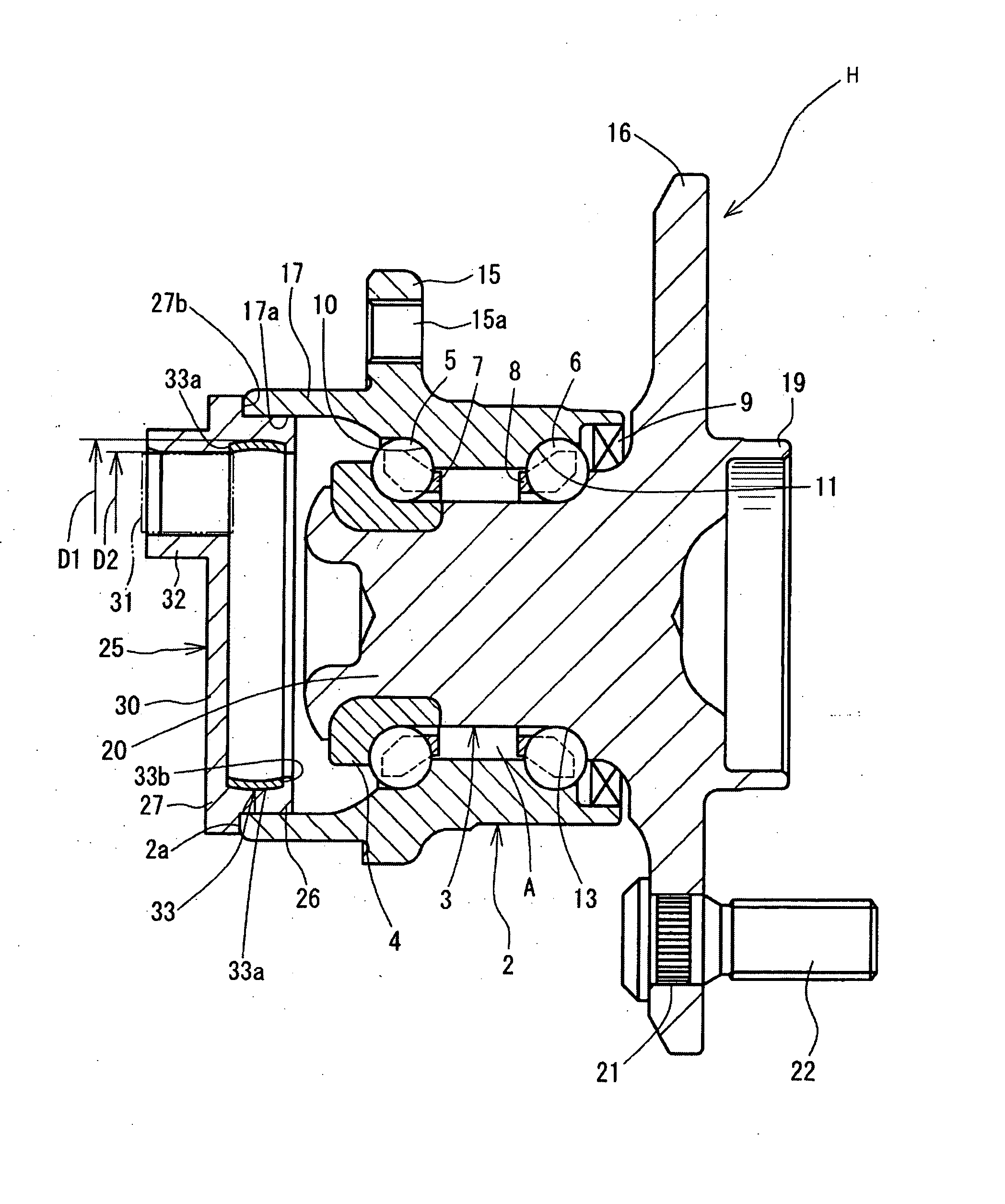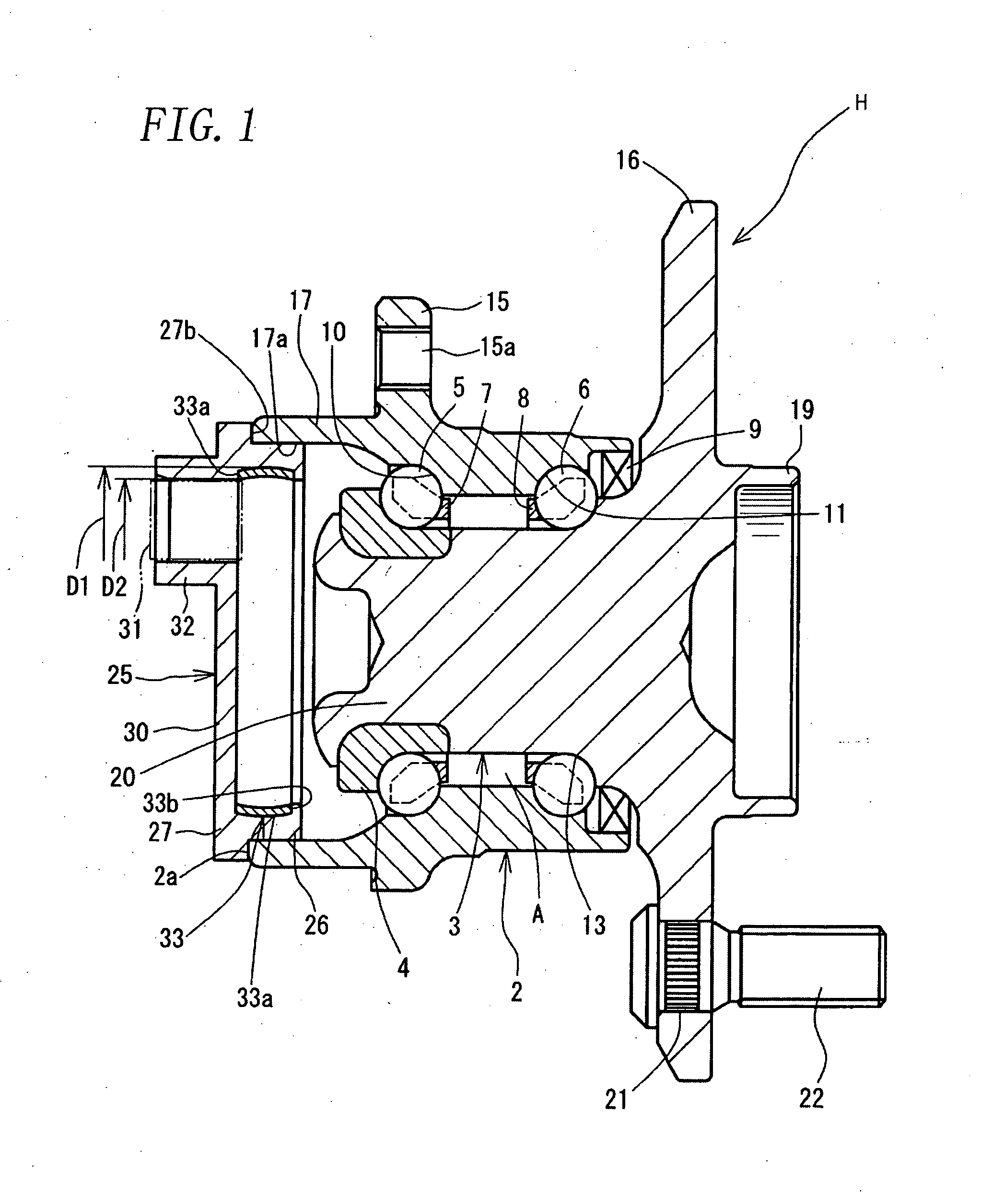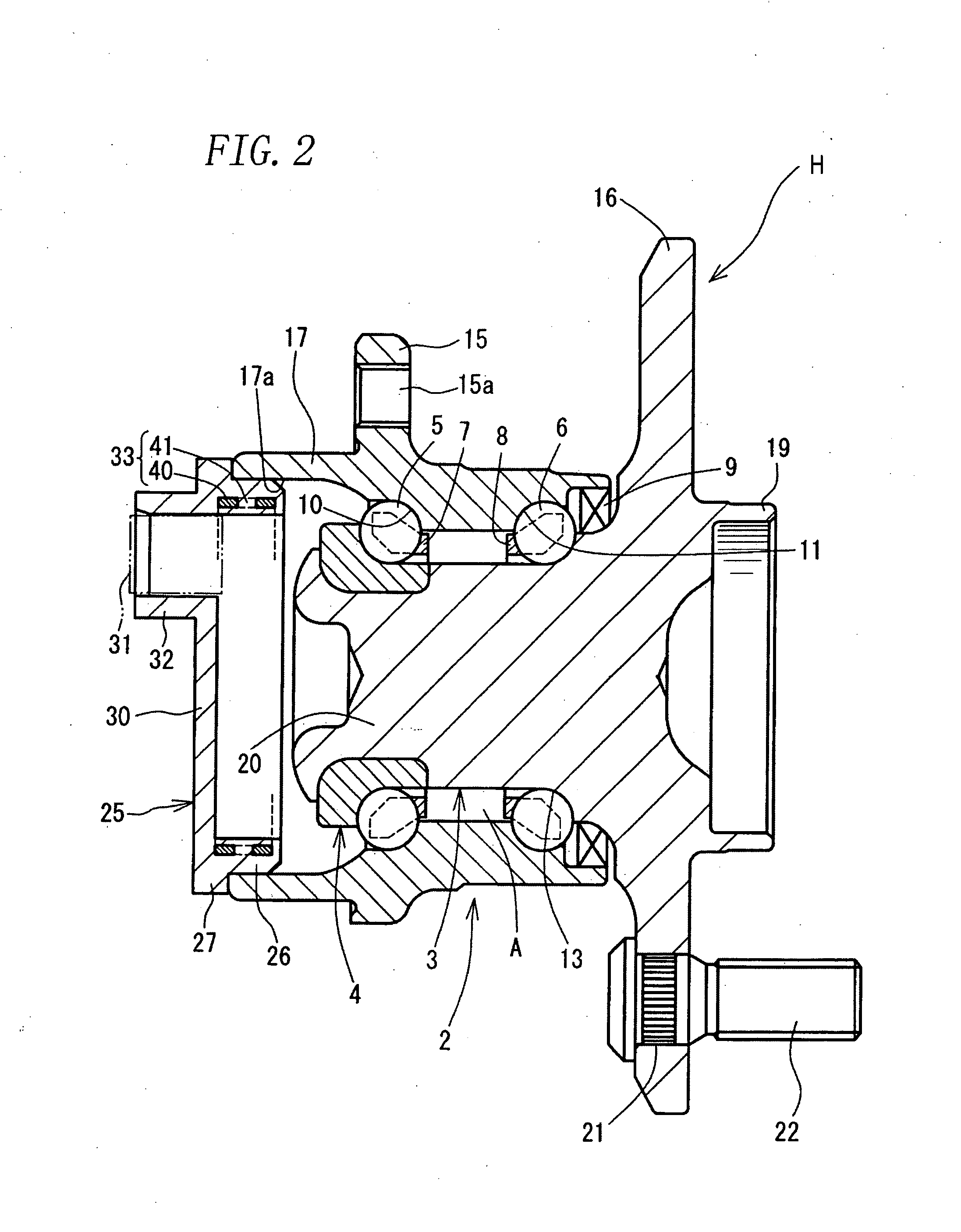Bearing Assembly
- Summary
- Abstract
- Description
- Claims
- Application Information
AI Technical Summary
Benefits of technology
Problems solved by technology
Method used
Image
Examples
Embodiment Construction
[0020] A bearing assembly according to an embodiment of the invention will hereinbelow be described in details with reference to the accompanying drawings.
[0021]FIG. 1 is a longitudinal sectional view showing a wheel rolling bearing assembly H (hereinafter, simply referred to as “bearing assembly”) according to one embodiment of the invention. In FIG. 1, the right-hand side represents a vehicular outer side (wheel side) of the bearing assembly H, whereas the left-hand side represents a vehicular inner side (the opposite side to the wheel). The bearing assembly H is constituted as a double-row outward angular contact ball bearing designed to carry an automotive driven wheel. The bearing assembly H includes: an outer ring member 2; a hub spindle 3; an inner ring 4; a plurality of rolling elements 5, 6; two cages 7, 8; and a seal 9. The hub spindle 3 and the inner ring 4 constitute an inner ring member disposed on an inside surface of the outer ring member 2. The outer ring member 2 i...
PUM
 Login to View More
Login to View More Abstract
Description
Claims
Application Information
 Login to View More
Login to View More - R&D
- Intellectual Property
- Life Sciences
- Materials
- Tech Scout
- Unparalleled Data Quality
- Higher Quality Content
- 60% Fewer Hallucinations
Browse by: Latest US Patents, China's latest patents, Technical Efficacy Thesaurus, Application Domain, Technology Topic, Popular Technical Reports.
© 2025 PatSnap. All rights reserved.Legal|Privacy policy|Modern Slavery Act Transparency Statement|Sitemap|About US| Contact US: help@patsnap.com



